Bringing Fish Back: Reviving Britain’s Freshwater Habitats with the Wild Trout Trust
Freshwater covers less than 1% of the Earth’s surface but has an outsized impact on global ecosystems, supporting more than 10% of all known species, reports the World Wildlife Fund. Freshwater environments such as rivers and wetlands provide significant scientific, economic, and cultural value. But pressure from climate change, biodiversity loss, and a lack of prioritization in environmental policies mean freshwater habitats are recognized as one of the most threatened in the world–something scientists have dubbed an “invisible tragedy.”
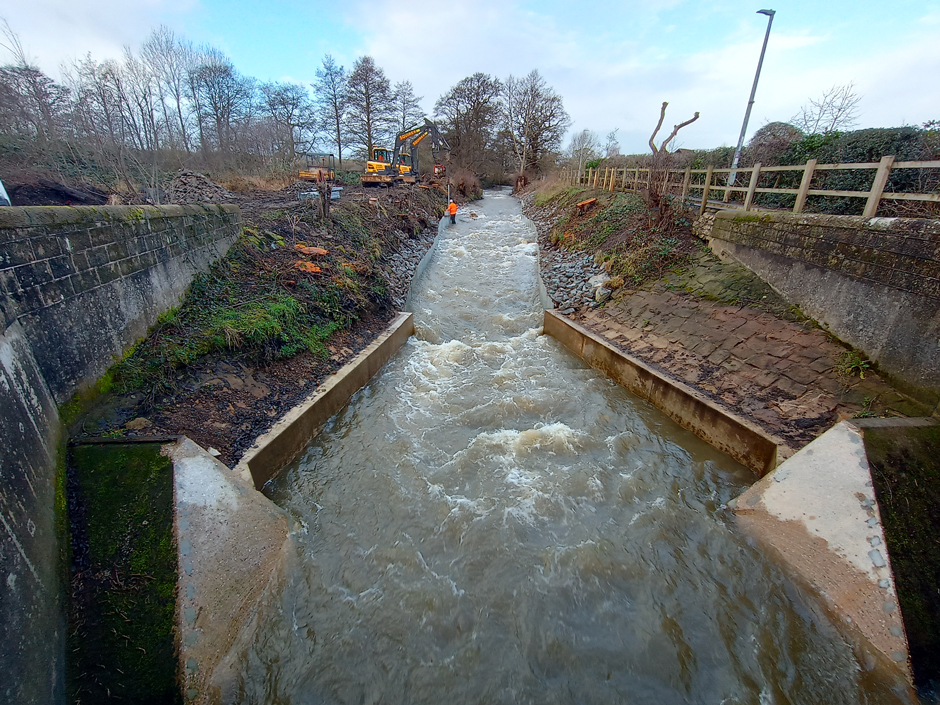
Remedial works underway to shore up the banks of the River Ecclesbourne. (Credit: Wild Trout Trust)
Understanding Freshwater Habitats
In the 20th century, the management of freshwater ecosystems was dominated by engineering solutions, including dams and weirs, which fragmented rivers worldwide. Consequently, according to one 2024 study, over two thirds of global rivers longer than 1,000km no longer flow freely.
Human changes to freshwater environments come at a high environmental cost. Among threatened freshwater species worldwide, an estimated 54% are affected by pollution, 37% by terrestrial land-use change–notably agro-industry–and 39% by dams and water management, according to a recent study published in Nature.
In response, there has been a shift toward adaptive practices such as rewilding and habitat restoration, with the US leading the way with projects like the Klamath Dam removal. The European Commission aims to restore 25,000 km of “free-flowing rivers” by 2030, a key goal for reestablishing migratory fish paths.
The Wild Trout Trust
Founded in 1997 by a group of concerned and informed anglers, the Wild Trout Trust is a conservation charity focused on improving freshwater habitats in the United Kingdom and Ireland. In the UK, the native Salmo trutta is an iconic species indicative of healthy habitat and good water quality.
Dr. Tim Jacklin, Conservation Officer for the Wild Trout Trust, and Professor Jonathan Grey, Professor of Aquatic Ecology at the Lancaster Environment Centre and also Research & Conservation Officer for the Trust, are passionate about freshwater environments and protecting the species that call them home.
Jacklin leads and consults on barrier removal projects, while Grey’s work centers on rehabilitating spawning grounds for trout and salmon in smaller tributaries.
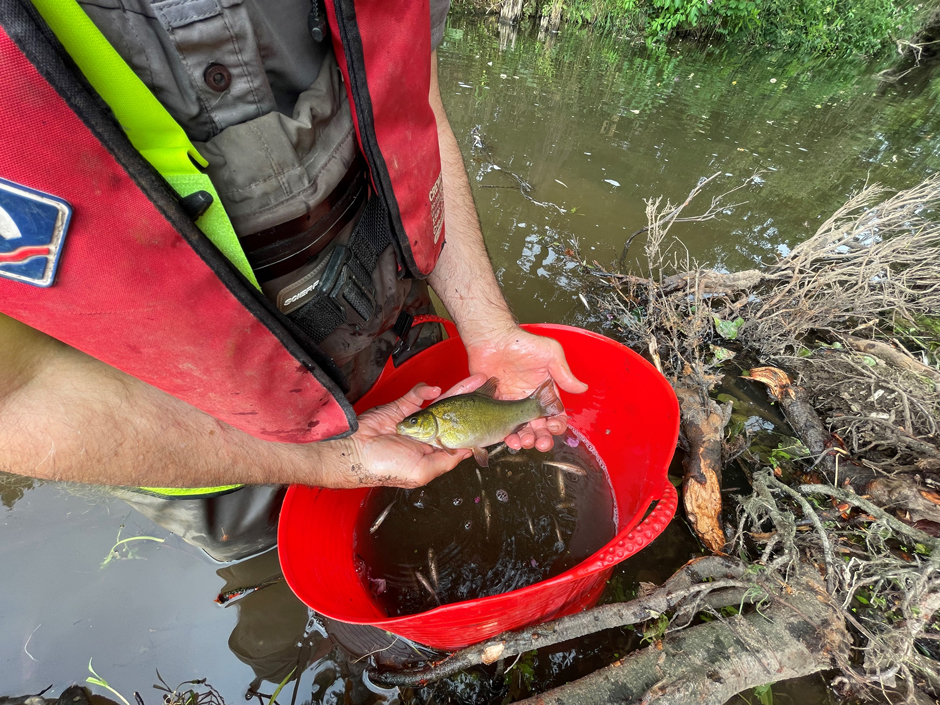
Tench found upstream of the Snake Lane Weir – a fish species usually found in lakes, showing how the weir was impacting the river habitat. (Credit: Wild Trout Trust)
Rehabilitating Freshwater Habitats
Grey describes habitat as one leg of a “three-legged bar stool,” alongside water quality and quantity. While water quality often receives the most attention, habitat restoration is equally important, but “the subtle changes that occur in physical habitat are much harder to convince people of,” Grey says.
In the UK, the engineering of rivers, aided by mechanization, happened at a “frightening” rate in the post-war years, driven by the national effort to boost food production. In just a few generations, dredging led to the extinction of burbot, a native freshwater fish adapted to live in undrained lowland rivers–an environment that has almost entirely disappeared.
Jacklin adds soberly, “If you said to me, ‘take me to a pristine river and show me what it should be like,’ I don’t think I’ll be able to find you one in the UK.”
Barriers to Fish in the Trent Catchment
One of the Wild Trout Trust’s recent projects was the removal of the Snake Lane Weir at Duffield, Derbyshire, which sits near the confluence of the Rivers Ecclesbourne and Derwent. The Derwent is a major tributary of the Trent, the third longest river in the UK.
This area was a hub during the Industrial Revolution, and for over a century, chronic pollution and industrial development, including in the Derwent Valley Mills UNESCO World Heritage Site, prevented fish from migrating upriver. It wasn’t until the late 20th century, when water quality improved, that salmon returned to the Trent catchment.
Fish passes were installed on three barriers in the River Derwent, allowing salmon to reach the confluence of the Ecclesbourne and Derwent, where the residents of Duffield started seeing salmon gathering below the weir.
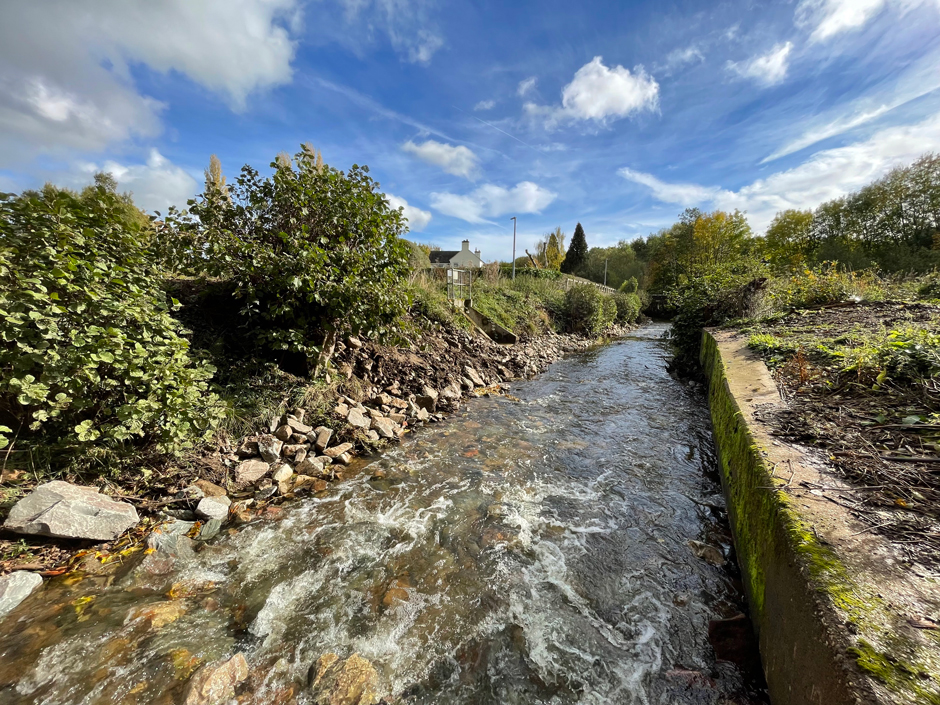
The Ecclesbourne as it falls down boulder ramps towards the location of the old Snake Lane Weir. (Credit: Ryan Taylor)
Snake Lane Weir Removal Project
Snake Lane Weir had long been identified as a barrier to fish passage, but seeing salmon gathering refocused efforts to remove it. Jacklin and a colleague from the Environment Agency developed a plan and secured funding to remove the weir.
The project proceeded smoothly, with the 2.5m drop at the weir reduced by spreading the gradient over 150 meters using boulder ramps. However, urgent remedial works were needed when lower water levels undermined the bank, causing a 10ft drop into the river from the path.
In October 2023, Storm Babet struck the UK, bringing severe weather and the third-wettest three-day period in England and Wales since 1891. The water level upstream of Snake Lane exceeded its previous maximum by nearly a foot.
The surge ripped out the first layer of boulders used to build the new riverbed, preventing water from passing down the flow split. Jacklin says, “Not only had we got that big technical problem of how we were going to sort this out, particularly with the ground being absolutely saturated, but there’d been extensive flooding in Duffield as well.”
Some residents linked the flooding to the weir removal, and the team found themselves facing a difficult public relations situation. Jacklin is clear that the Duffield flooding was the result of record-breaking water levels, not the weir removal. However, this highlights potential risks of rewilding projects, and the need for open and honest communication throughout.
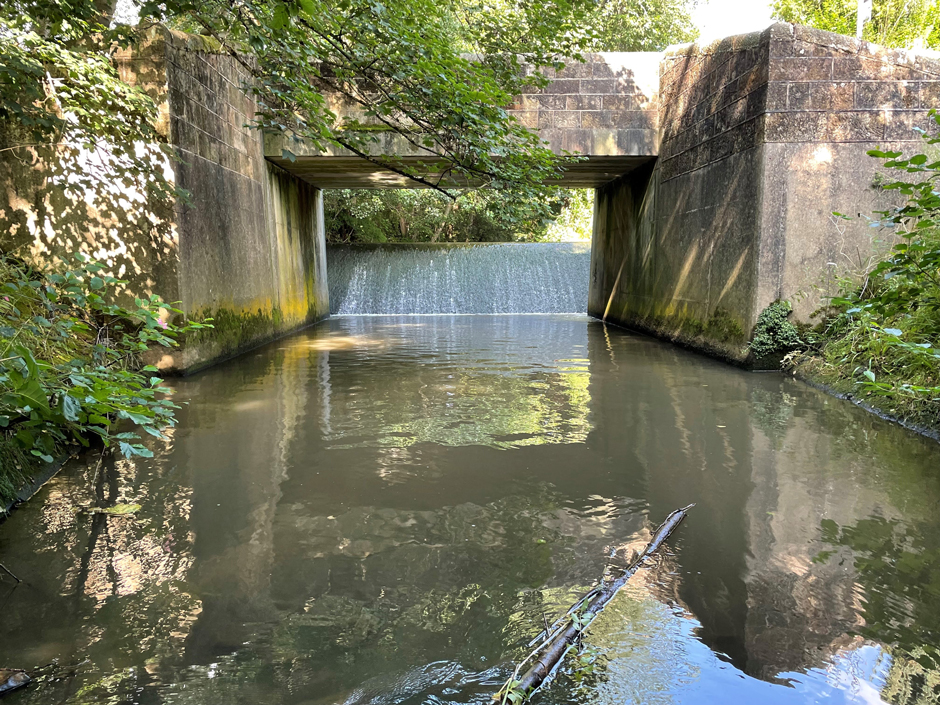
Snake Lane Weir. (Credit: Ryan Taylor)
Success of Snake Lane Weir Removal
The removal of Snake Lane Weir has opened the River Ecclesbourne sub-catchment to fish migration, transforming both fish populations and the physical environment,
In the first surveys after the removal of the Snake Lane Weir, salmon were found upstream in the Ecclesbourne. And while some might see the “presence, absence” test as unscientific, Jacklin finds it motivating to see the project’s tangible impact.
He notes, “We have restored a sustainable, self-sustaining population of Atlantic salmon, a species that’s just been put on the threatened list, back to a river where they formerly went extinct.”
The Challenge of Good Data
Obtaining consistent, high-quality data on freshwater habitats in the UK is a challenge, especially as baseline monitoring by the Environment Agency has significantly decreased following budget cuts.
Grey remarks, “We’re lucky if we have data on a particular stream once every six years–some streams don’t have any data whatsoever.”
Indeed, Grey’s TRoUT (Tackling Resilience on Underperforming Tributaries) project, which received five years of funding for monitoring, is “probably one of the longest term monitoring programmes of such a rehabilitation project in the UK.”
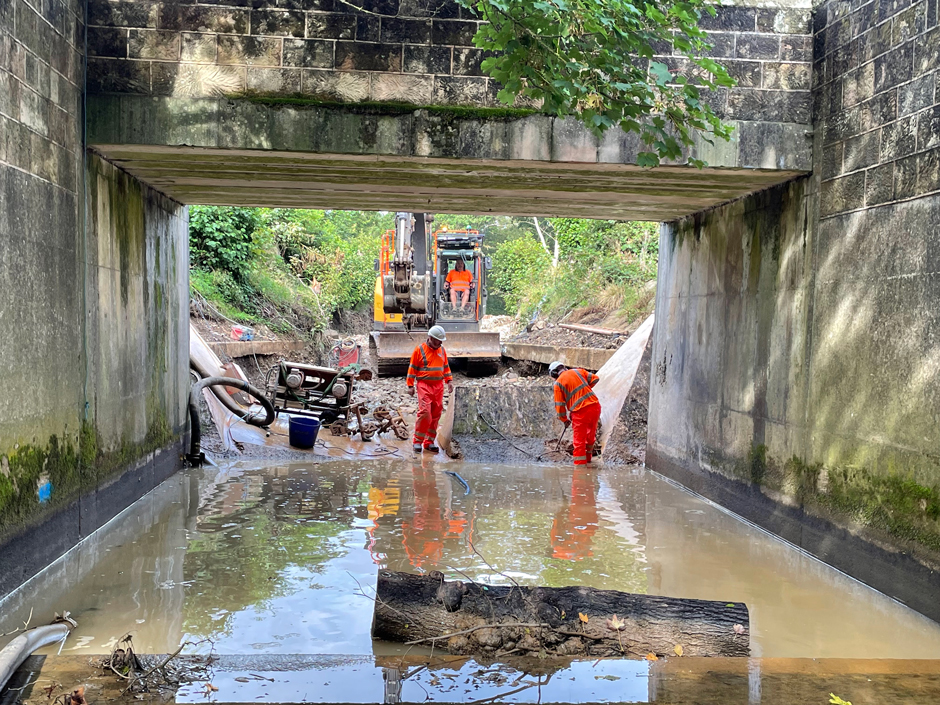
Work underway to remove Snake Lane Weir. (Credit: Environment Agency)
However, Jacklin and Grey remain optimistic, highlighting the value of the Wild Trout Trust’s team’s expertise and experience, which allows them to extrapolate and make comparisons from years of fieldwork.
Fish like trout are used as an indicator species. Jacklin explains, “If they’re doing well, then water quality and habitat must be reasonably good in these areas.”
Many studies have explored the link between fish assemblages and stream characteristics like width, depth, substrate, flow, and chemical properties, with fish species serving as effective early warning systems.
Grey adds that he uses young-of-year trout to measure the impact of interventions, collecting baseline data for one or two years prior to any works and for several years following. He works with volunteers to take an annual data point from both intervention and control streams.
Using electric fishing to stun the fish temporarily, he collects information on species, size and health to understand how populations and communities respond.
Untangling the impact of interventions by studying fish populations is not always straightforward, especially when potential impacts can be seen over hundreds of miles and over many years.
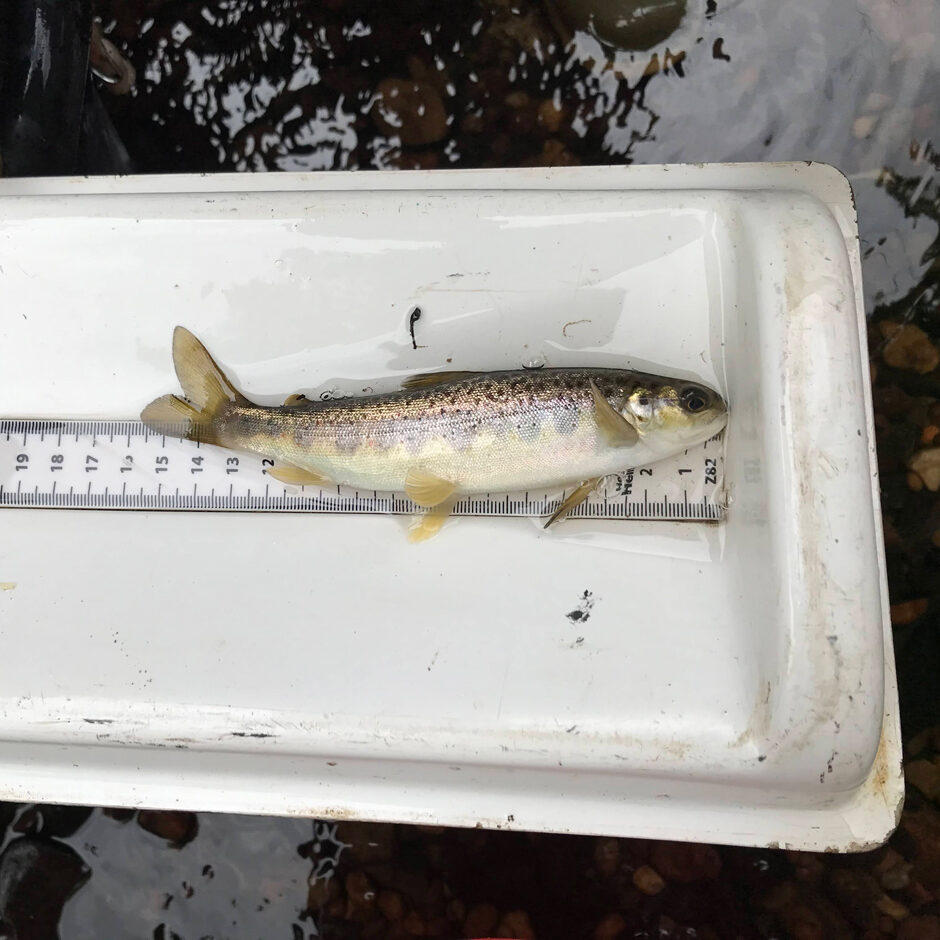
Juvenile Atlantic salmon caught during fisheries surveys below Snake Lane weir. (Credit: Environment Agency)
Modern Challenges
Climate change poses a long-term threat and a “double whammy” of challenges for cold-adapted species like trout and salmon. Warmer, wetter winters cause eggs to develop too rapidly and risk washout. Hotter, drier summers can decrease flow in upland streams significantly enough to isolate them into disconnecting standing pools, which in turn warm faster.
One study In Idaho, USA, for example, estimated that bull trout have lost 8–16% per decade of the stream lengths necessary for spawning and juvenile rearing due to climate change, with the largest losses occurring in the coldest habitats.
“So it’s out of the frying pan into the fire with climate change,” Grey says.
Nonetheless, the work of the Wild Trout Trust is leaving a lasting legacy on the UK’s freshwater habitats.
Jacklin reflects, “I took the projections from 1995 of where salmon would get to and where they’d get stuck [before their reintroduction to the Trent catchment], and then updated it for what it was now. It was amazing to see how much progress had been made in those 30 years.”
Removing physical barriers is just one crucial part of the Wild Trout Trust’s work to revive habitats and educate the public on the importance of healthy freshwater environments.
Grey adds, “Even if a weir isn’t necessarily a high priority, by removing it, you’re putting even greater pressure on the remaining barriers, you’re demonstrating that it can be done, and you are winning hearts and minds as you go.”
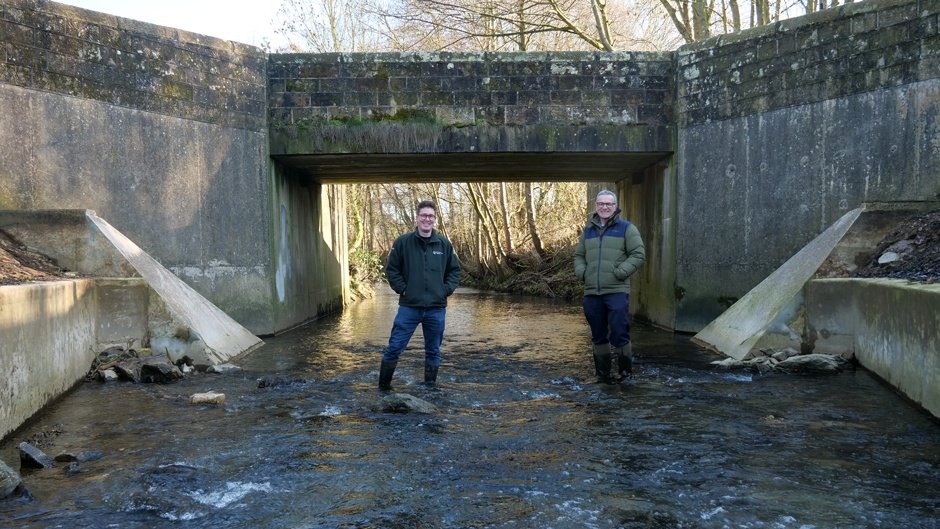
Dr Ryan Taylor (left) and Dr Tim Jacklin (right) standing in the Ecclesbourne where the Snake Lane Weir used to cross the river. (Credit: Helen Campbell / ACE Nature Ltd)




Wild Trout Trust
February 14, 2025 at 6:18 am
What a fascinating article – thank you for having us!